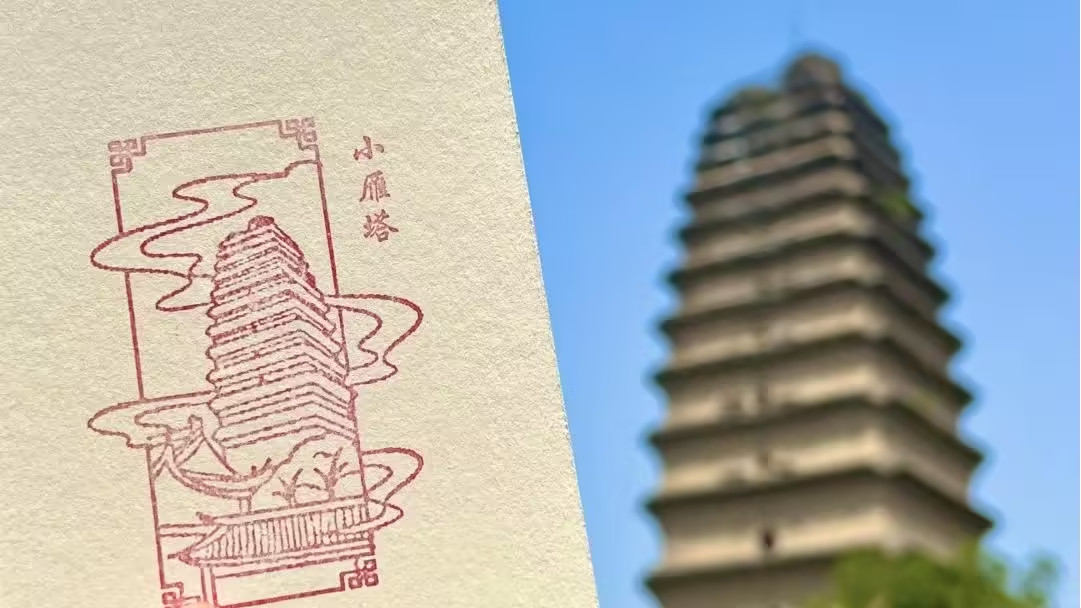The Small Wild Goose Pagoda, one of Xi’an’s most iconic landmarks, offers visitors a fascinating blend of history, architecture, and serene landscapes. Located in the Jianfu Temple in the southern part of Xi’an, this ancient pagoda is a key part of the Xi’an Museum, making it a must-see for those interested in both cultural heritage and photography. With its elegant structure, rich history, and picturesque surroundings, the Small Wild Goose Pagoda provides a unique experience. In this guide, we’ll take you through essential information on how to visit, what to see, and the best spots to capture stunning photos during your trip.
Ticket Information and Opening Hours
Entry to the Small Wild Goose Pagoda is free, but you need to make a reservation in advance. To book your tickets, search for “Xi’an Museum Reservation” on WeChat.
Visitors can access the pagoda from 9:00 AM to 5:50 PM, but note that the pagoda is closed on Tuesdays.
If you book a ticket to the Small Wild Goose Pagoda, you also get access to the Xi’an Museum, so it’s an excellent opportunity to explore both the pagoda and its rich cultural exhibits in one visit.
About the Small Wild Goose Pagoda
The Small Wild Goose Pagoda, also known as the Jianfu Temple Pagoda, is an exceptional example of early Chinese square brick pagoda design. It was built during the Tang Dynasty, specifically between 707 and 710 CE, under the reign of Emperor Zhongzong. The pagoda was originally constructed to house Buddhist scriptures, images, and relics brought back from India by the famed monk Yijing.
Standing 43.4 meters tall and originally comprising 15 stories (now 13), the pagoda has a graceful appearance that represents the pinnacle of Tang Dynasty Buddhist architecture. The base of the pagoda measures 11.38 meters on each side, and it was constructed using gray bricks, with each layer of the pagoda tapering slightly inward as it rises. The pagoda’s roof is adorned with iron ornaments, including a bowl-shaped covering and a distinctive upward-curved iron spire, giving it a striking and refined look. Beautiful Buddhist motifs and inscriptions can be seen carved into the walls, adding to its cultural significance.
Historical Significance and Survival Through Earthquakes
The Small Wild Goose Pagoda has stood for over 1,300 years, enduring numerous earthquakes throughout its history. In 1487, an earthquake caused cracks in the pagoda, leading to a restoration effort during which an additional layer of brick was added to reinforce its structure. Another major earthquake in 1556 caused the top two stories to collapse, but remarkably, the pagoda did not fall. Instead, it split into two halves. In a subsequent earthquake in 1595, the pagoda was restored and “rejoined without a trace,” showcasing the incredible craftsmanship and resilience of ancient Chinese architects.
Touring the Small Wild Goose Pagoda
The pagoda is located within a peaceful garden and is part of a larger complex that includes the Jianfu Temple and other cultural sites. A visit to the Small Wild Goose Pagoda is best started by entering through the North Gate, followed by a walk along the Wutong Avenue (known for its beautiful trees). After exploring the Baiyi Pavilion, head towards the pagoda itself, where you’ll also find the Daxiongbao Hall (Grand Hall of Great Hero), Cishi Pavilion, and the Yanta Morning Bell. The pagoda’s Bell Tower and Drum Tower are also must-visit areas before you exit from the South Gate and head to the nearby Xi’an Museum.
Recommended Photo Spots
For photography enthusiasts, the Small Wild Goose Pagoda offers several fantastic spots to capture its beauty:
- Front Railing by the Lotus Pond: The lotus pond provides a serene foreground with the pagoda standing tall in the background—a perfect spot for capturing the pagoda’s elegant lines.
- Stone Bridge Near the Museum: Walk towards the Xi’an Museum, where a small stone bridge offers a great view of the pagoda. Standing on the bridge provides an excellent angle for photos.
- Open Area in Front of Daxiongbao Hall: This spacious area gives you the chance to capture the upper half of the pagoda, framed by the hall’s surroundings.
- Small Courtyard Gate by Daxiongbao Hall: Near the side of the Daxiongbao Hall, you’ll find a quaint courtyard gate. Stand in front of a nearby pavilion to take photos featuring the pagoda, the gate, and the bamboo.
- Staircase Views: The pagoda’s staircases offer a great perspective for taking photos of the pagoda’s layered structure.
- Wooden Pavilion: This charming pavilion near the pagoda creates an interesting contrast when framed with the towering structure of the pagoda.
- Through the Archway: The stone archway leading to the pagoda provides a beautiful framing for photos, highlighting the pagoda’s tall and graceful form.
Practical Tips for Visiting
- Booking Tickets: As mentioned earlier, you must reserve your ticket in advance via WeChat. Remember to bring your ID for entry.
- Best Time to Visit: Arrive early in the morning to avoid the crowds and to enjoy the tranquility of the site. The pagoda is especially beautiful at dawn and dusk, offering a unique light for photography.
- What to Wear: Comfortable shoes are recommended, as you’ll be walking and exploring the temple grounds. The site is fairly large, and you may want to spend a few hours here.
- Other Attractions Nearby: After visiting the Small Wild Goose Pagoda, take the time to explore the surrounding gardens and the nearby Xi’an Museum, which is also a treasure trove of historical and cultural exhibits.

